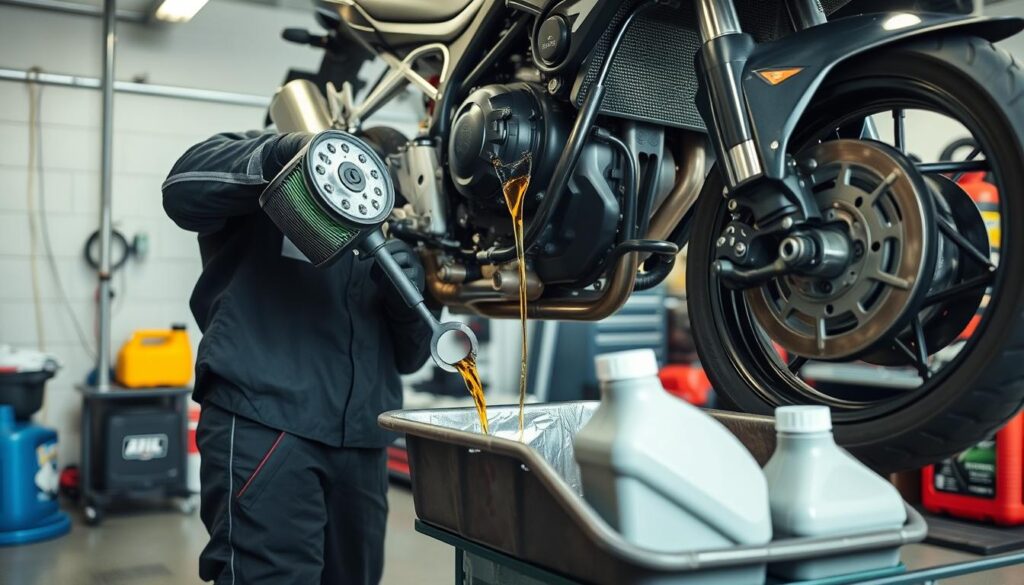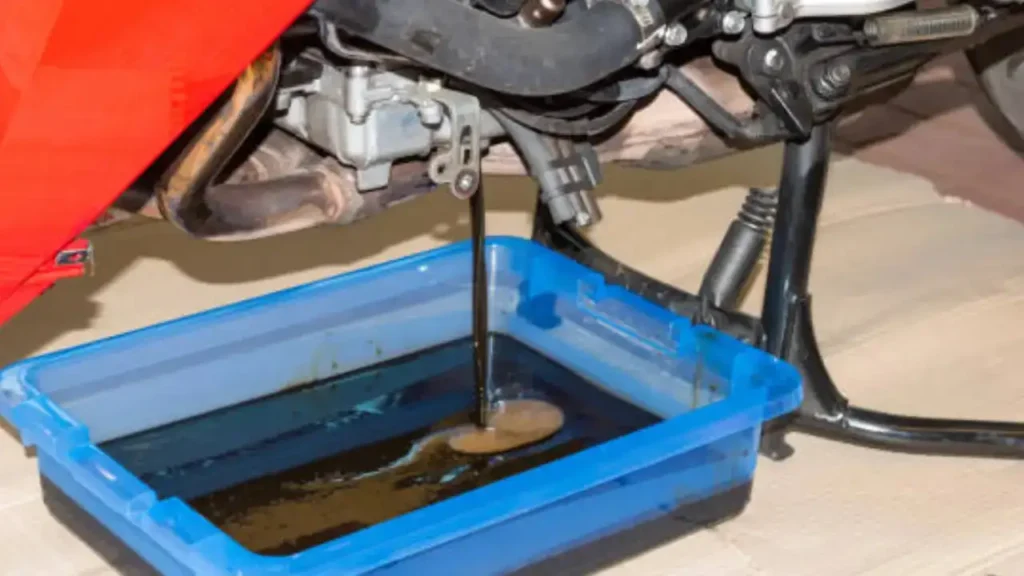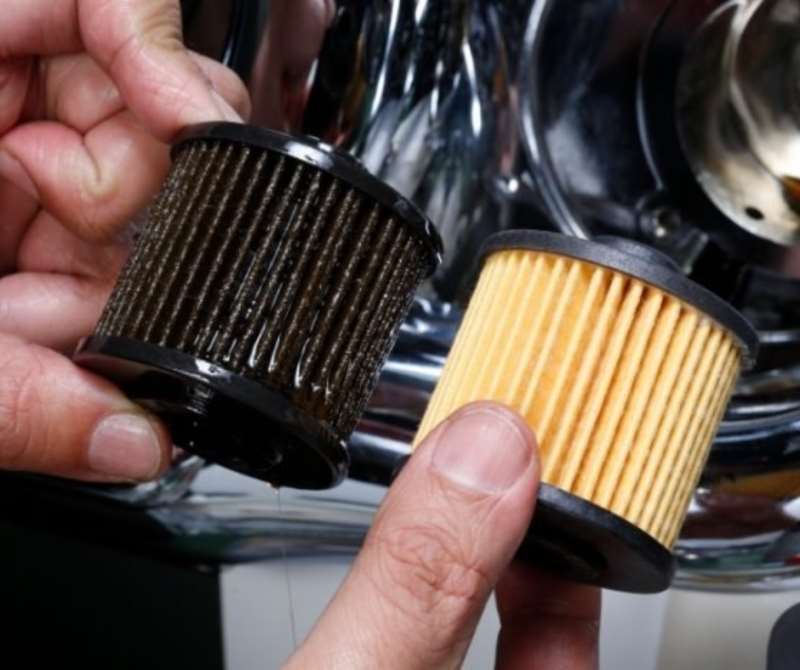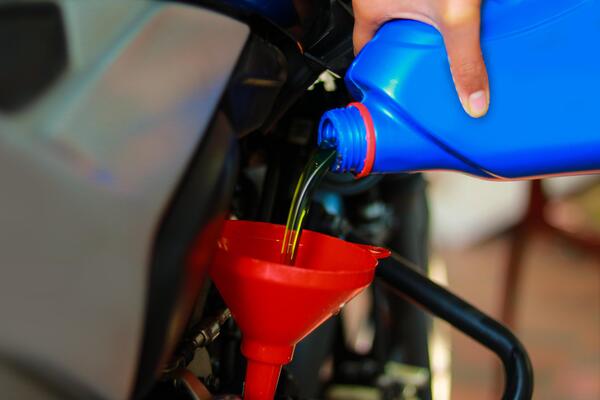Regularly changing your bike’s engine oil is essential for maintaining performance, efficiency, and engine longevity. Fresh oil keeps the engine lubricated, Bike oil change safety tips reducing wear and tear while ensuring smooth operation. However, many riders overlook important safety precautions during an oil change. Bike maintenance tips From selecting the right oil to properly disposing of the old one, Bike oil change safety tips following the right steps can prevent accidents and keep your bike in top condition. In this guide, we’ll cover key safety tips every rider should know before changing their engine oil.
1. Gear Up with the Right Safety Stuff

Before you even touch a wrench, let’s talk safety gear. I’ve seen too many riders dive in bare-handed and end up with burns or greasy messes. Grab some nitrile gloves they’re tough, oil-resistant, and keep your hands clean. Safety goggles are a must too; you don’t want old oil splashing in your eyes (it stings, trust me!). Toss on an old long-sleeve shirt or a mechanic’s apron to shield your skin from hot drips. And if you’ve got long hair like I used to, tie it back nothing ruins your day like hair stuck in a greasy engine.
Why It Matters: Oil can be hot, sticky, and full of nasty stuff. Bike maintenance tips One slip, and you’re nursing a burn instead of riding. Gear up, and you’re in control.
2. Pick a Stable Spot for Your Bike

Ever tried changing oil with your bike tipping like a drunk uncle at a wedding? Disaster waiting to happen! Park your bike on a flat, solid surface concrete’s perfect. Use the center stand if you’ve got one; it’s way sturdier than a side kickstand. If you’re stuck with the side stand, prop it with a flat piece of wood or a puck to keep it level. Double-check it’s steady before you start give it a gentle nudge to test.
Why It Matters: A wobbly bike can fall, spill oil everywhere, or crush your toes. Stability keeps you safe and the job smooth.
3. Warm It Up, But Don’t Burn Yourself
Cold oil’s thick and stubborn it won’t drain well. So, start your bike and let it idle for 5-10 minutes to warm the engine. You’ll hear that sweet hum as the oil thins out. But here’s the kicker: don’t jump in the second you shut it off! That oil’s hot enough to blister give it 10-15 minutes to cool a bit. I usually sip a coffee while I wait, Bike maintenance tips keeping my hands safe and my patience intact.
Why It Matters: Warm oil flows better, but scalding oil hurts. Timing keeps you safe and gets the old stuff out efficiently.
4. Drain Smart, Not Sloppy

Popping the drain plug sounds simple, right? But it’s easy to mess up. Place a wide drain pan bigger than you think you need right under the plug. Loosen the bolt slowly with a wrench (check your manual for the size), and let the oil stream out controlled-like. Don’t yank it out fast, or you’ll splash hot oil everywhere. Once it’s dripping, clean the plug with a rag grime loves to hide there. And don’t overtighten it when you screw it back snug is enough, Bike oil change safety tips or you’ll strip the threads.
Why It Matters: A sloppy drain means burns, spills, or a ruined garage floor. Smart draining keeps it safe and tidy.
5. Swap the Oil Filter Every Time

I know, filters cost a few bucks, and it’s tempting to reuse the old one. Don’t. That filter’s clogged with dirt and metal bits from your engine letting it sit means all that junk flows back in with your fresh oil. Unscrew it with a filter wrench (gently, no Hulk moves), dab some new oil on the rubber gasket of the new filter, Bike oil change tipsand hand-tighten it plus a quarter turn. No leaks, no fuss.
Why It Matters: A dirty filter kills your engine’s vibe fresh oil deserves a fresh filter for max protection.
6. Pour the Right Amount of Oil

Overfilling or underfilling is a rookie mistake I’ve made (yep, guilty!). Check your bike’s manual for the exact amount usually 1-2 liters for most bikes. Use a funnel to pour slowly into the fill hole, and stop to check the dipstick every half-liter. Wipe it, dip it, and read it aim for the middle of the “full” and “low” marks. Too much oil? Bike oil change tips It’ll foam and strain the engine. Too little? You’ll fry it.
Why It Matters: Wrong levels mess with pressure and lubrication get it right for a happy engine.
7. Dispose of Old Oil Like a Pro
That black, sludgy oil you drained? Don’t dump it in the trash or down the drain it’s toxic and illegal. Let it cool in the drain pan, then pour it into an old milk jug or a sealed container. Take it to an auto shop or recycling center most spots take it free. I keep a jug in my shed just for this, labeled “Dead Oil.”
Why It Matters: Bad disposal hurts the environment and could cost you a fine. Be a responsible rider do it right.
Conclusion
Changing your bike’s engine oil isn’t just routine maintenance it’s a crucial step in keeping your ride safe and reliable. By following Bike maintenance tips right safety precautions, you can avoid spills, burns, and mechanical issues. Bike maintenance tips Always use the recommended oil, work in a well-ventilated area, and dispose of used oil responsibly. Bike oil change safety tips A little care goes a long way in ensuring your bike runs smoothly, Bike oil change tips giving you the best performance on the road. Ride safe and keep your engine well-protected!








